Autism Behavior Problems


Unveiling the complexities of autism behaviors and effective strategies for support
Autism Spectrum Disorder (ASD) is characterized by a wide range of behaviors that can significantly impact daily life. Challenging behaviors such as aggression, self-injury, and tantrums are common, affecting not only individuals with autism but also their families and caregivers. This article explores the nature of these behaviors, their underlying causes, assessment methods, and evidence-based management strategies that promote better understanding and support.
Identifying Common Autism Behaviors and Symptoms
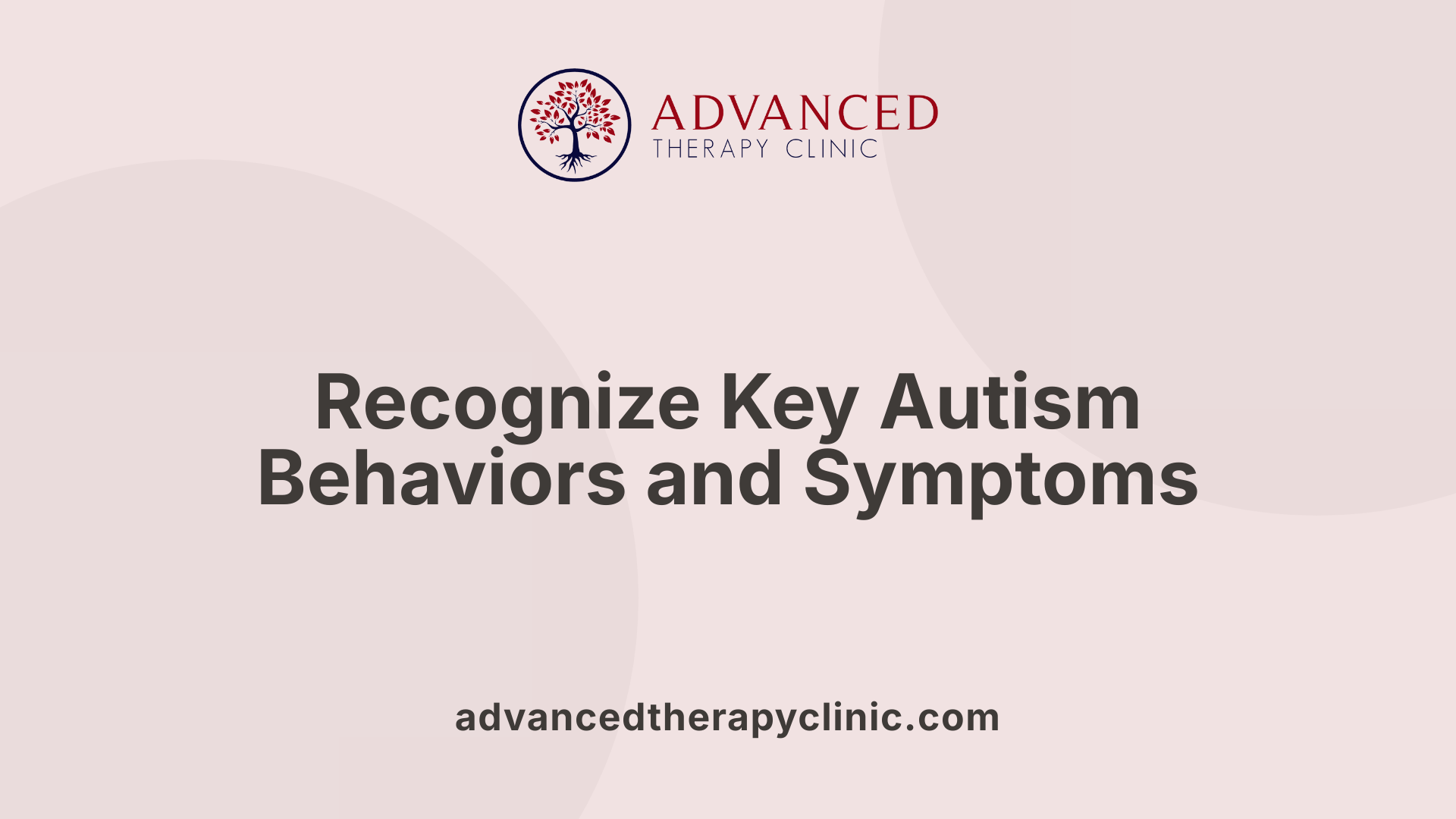
What are the common behaviors associated with autism and their symptoms?
Autism spectrum disorder (ASD) presents a range of behaviors and symptoms that can vary widely among individuals. One of the hallmark features is difficulty with social communication and interaction. Children and adults with autism often avoid eye contact, may not respond when their name is called, and tend to use fewer gestures or facial expressions to communicate. These challenges can make social engagement and building relationships harder.
Repetitive behaviors are also characteristic, such as hand-flapping, body rocking, spinning in circles, or fixating on specific objects or interests. These actions are often soothing for the individual and help them regulate sensory inputs or emotional states.
Sensory sensitivities are common, with many individuals reacting intensely to sounds, lights, textures, or tastes. These sensitivities might cause discomfort or even pain, but sometimes they lead to unusual focus or fixation on certain stimuli or routines. Resistance to changes in routines and a preference for sameness are also pervasive traits.
Some individuals with autism experience delays in speech and motor skills. They might have trouble learning to speak or walk at typical ages, and their language development may be limited or delayed. Self-injurious actions like head-banging, biting, or scratching can also occur, often as responses to overwhelming stimuli or emotional distress.
Emotional and behavioral regulation challenges are frequent. Many people with autism struggle to manage frustration, anxiety, or excitement, leading to outbursts, tantrums, or meltdowns. Obsessive interests and intense focus on particular topics or objects are common, which can sometimes interfere with daily functioning.
Overall, these symptoms manifest with a wide spectrum of severity, emphasizing the importance of early diagnosis and tailored interventions to support social, communication, and behavioral development.
Underlying Causes of Challenging Behaviors in Autism
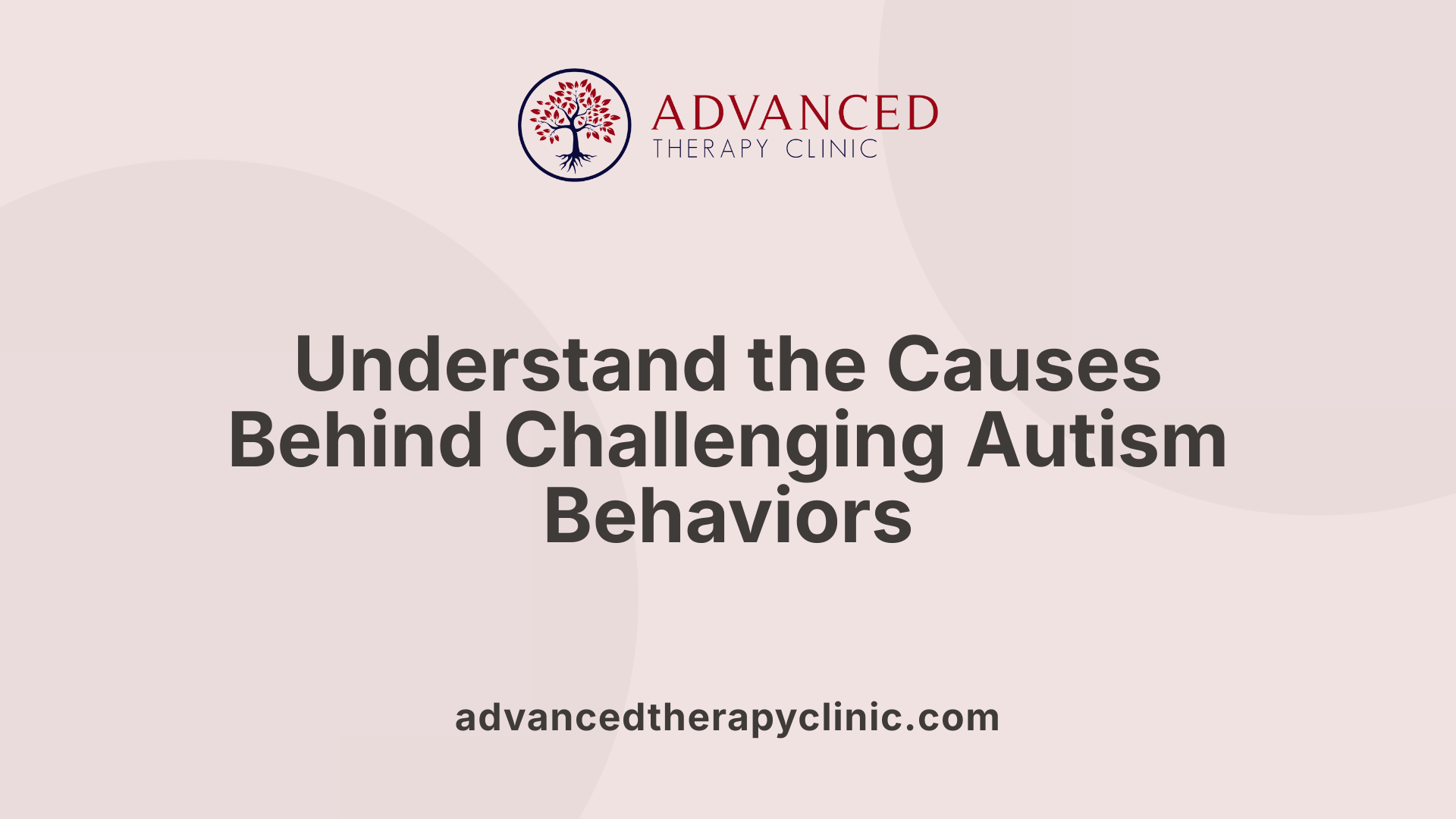
What causes challenging behaviors in individuals with autism?
Challenging behaviors in people with autism, such as aggression, self-injury, and tantrums, often stem from an intricate mix of physical, sensory, communicative, and environmental factors.
One of the main contributors is sensory overload. Many individuals with autism experience heightened or diminished responses to sensory input. For instance, loud noises, bright lights, or crowded environments can overwhelm their senses, leading to outbursts or withdrawal as a way to cope.
Communication challenges are also significant. Difficulties expressing needs or feelings can cause frustration and anxiety, which may manifest as aggressive acts or self-injury. When children or adults cannot effectively say they are in pain, hungry, or tired, their behaviors might serve as signals of their internal discomforts.
Medical comorbidities often play a crucial role. Conditions like allergies, infections, gastrointestinal issues (such as constipation or reflux), and sleep disturbances are common in autism and can intensify behavioral problems. For example, untreated pain from dental infections or ear infections might cause irritability or aggression.
Internal discomforts and pain are sometimes hard to identify because individuals with autism might not communicate their symptoms clearly. Impairments in interoception—the perception of internal body sensations—mean that some may not recognize or express pain appropriately, leading to behaviors as responses to internal distress.
Environmental triggers also have a notable impact. Sudden changes in routines, noisy settings, or social pressures can be overwhelming.
Finally, impairments in interoception, which include responses to internal stimuli like hunger or discomfort, can cause behaviors without obvious external triggers. When these internal cues are misinterpreted or go unnoticed, behaviors such as head-banging, biting, or tantrums may occur.
Understanding these interconnected causes underscores the importance of comprehensive assessments, including medical, behavioral, and sensory evaluations, to tailor effective support strategies. Addressing both the external environment and internal health factors can significantly reduce challenging behaviors and improve quality of life for individuals with autism.
Assessment Approaches for Autism-Related Behaviors
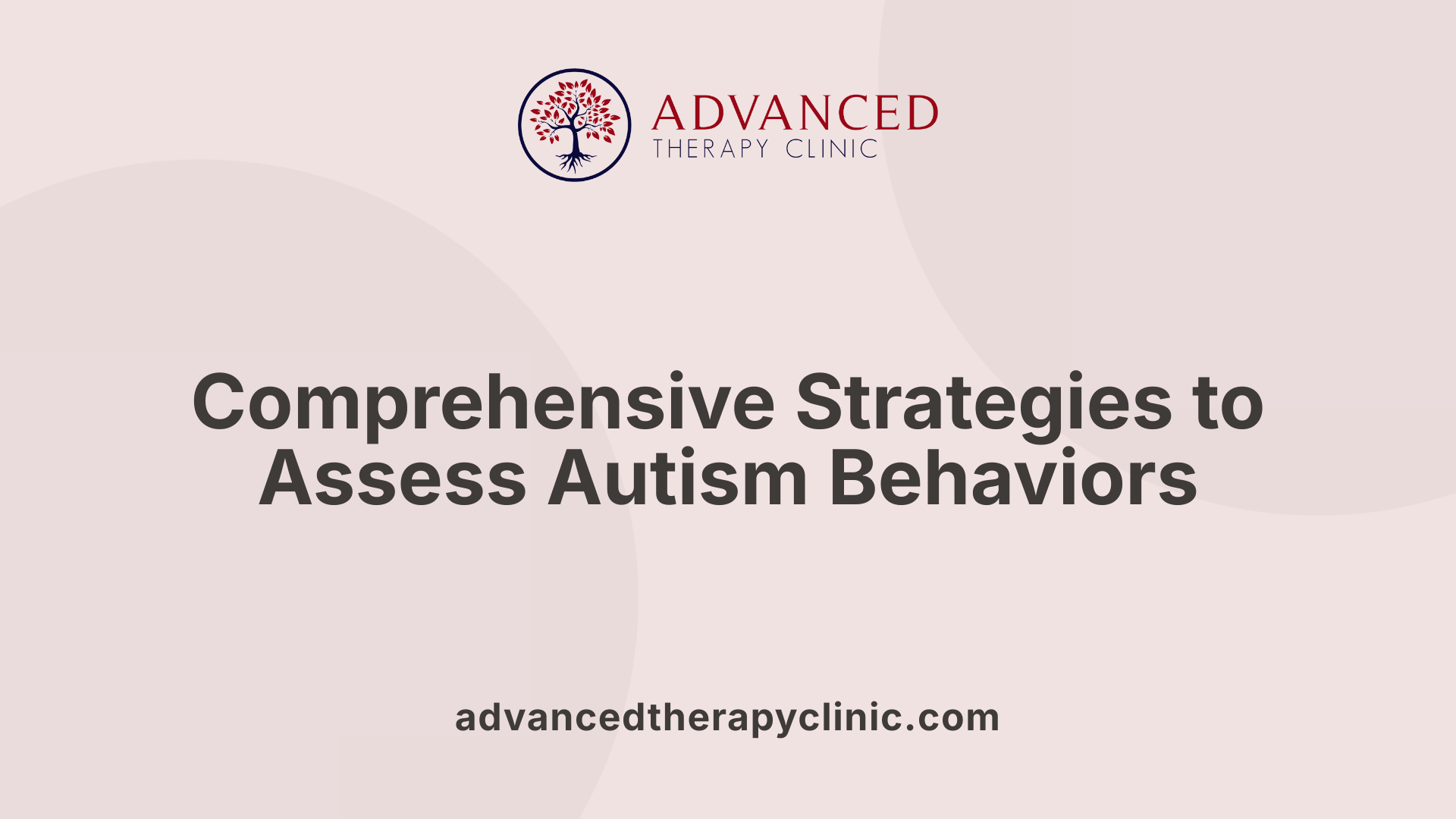
How can challenging behaviors in autism be assessed?
Understanding and managing challenging behaviors in autism starts with thorough assessment methods. Behavioral observations are a fundamental part of this process. Clinicians observe the individual in different settings to identify triggers and consequences of problematic behaviors. These insights help determine whether behaviors are due to sensory overload, communication difficulties, or other internal or external factors.
Standardized checklists like the Autism Diagnostic Observation Schedule (ADOS), Autism Diagnostic Interview-Revised (ADI-R), and Childhood Autism Rating Scale (CARS) are important tools used by professionals. They help evaluate core symptoms such as social communication deficits and repetitive behaviors.
Multidisciplinary evaluations also play a crucial role. They involve a team of specialists, including psychologists, pediatricians, occupational therapists, and speech-language pathologists, working together to get a comprehensive understanding of the individual’s needs.
A key assessment method is the Functional Behavioral Assessment (FBA). This process identifies the antecedents, behaviors, and consequences (the ABCs) to understand why a challenging behavior occurs. FBA guides intervention planning by pinpointing functionally related triggers.
In addition, clinical and medical examinations help rule out or identify any underlying medical conditions that may contribute to behavior problems. These can include allergies, gastrointestinal issues, or sleep disturbances.
Another essential component is taking an extensive developmental history. Information from parents and caregivers about early milestones, patterns of behavior, and changes over time provides valuable insights for diagnosis and intervention.
Since there is no single medical test for autism, diagnosis relies solely on behavioral and developmental assessments. This comprehensive approach ensures that interventions are tailored to address the specific causes and functions of each individual’s behaviors.
In summary, the assessment process for autism-related behaviors involves behavioral observations, standardized tools, multidisciplinary input, functional analyses, clinical examinations, and detailed developmental histories. This multi-faceted evaluation helps shape effective, personalized intervention strategies.
Management and Intervention Strategies
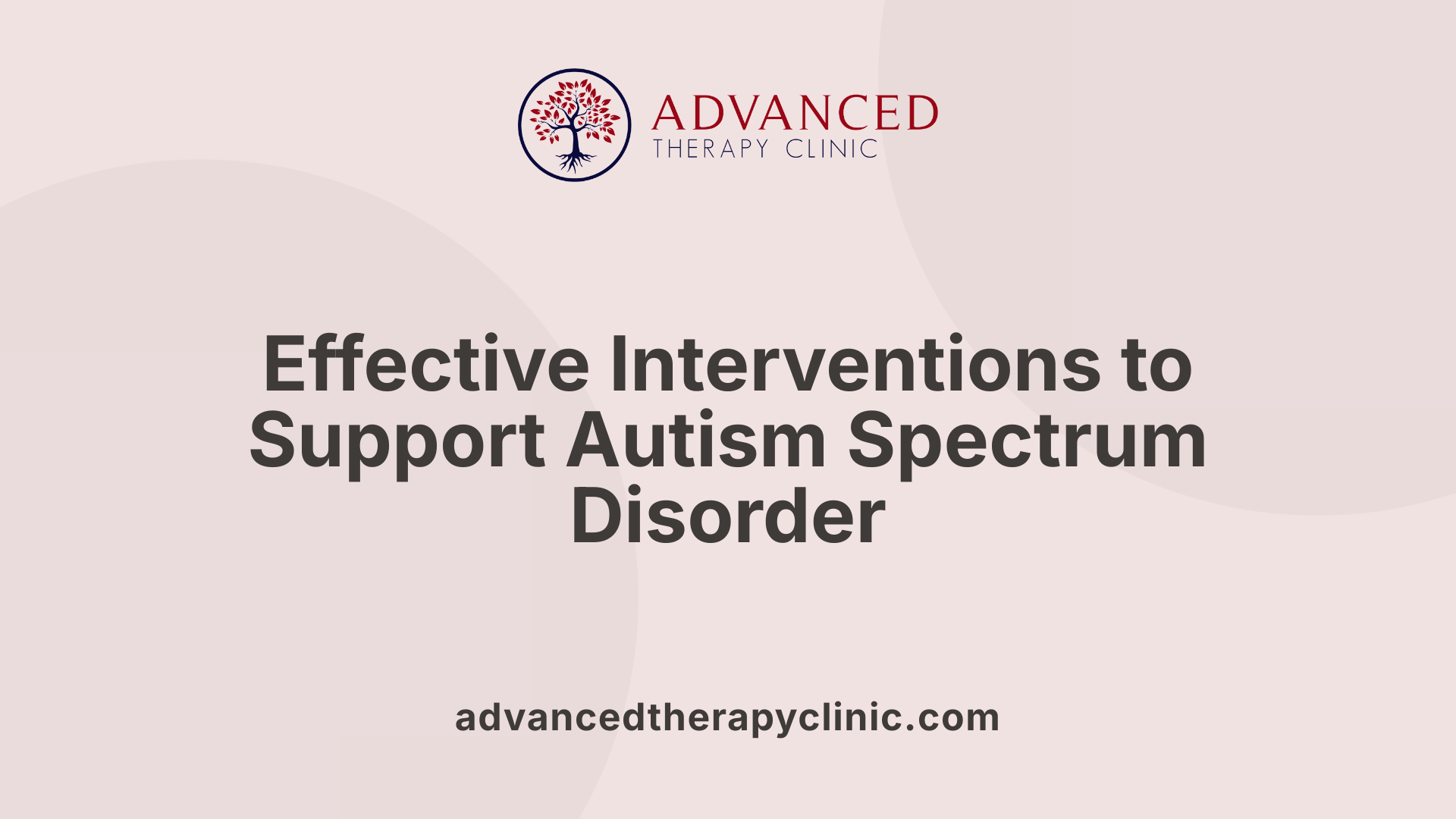
What are some effective management and intervention strategies for autism-related behaviors?
Managing behavioral issues in autism involves a multifaceted approach tailored to each individual’s needs. Evidence-based behavioral therapies are fundamental. Applied Behavior Analysis (ABA) is widely regarded as a leading method, utilizing reinforcement, prompting, and response techniques to teach functional skills while reducing problematic behaviors.
Within ABA, various strategies such as Pivotal Response Training and naturalistic interventions emphasize engaging the individual in real-world settings, making learning relevant and effective. These therapies focus on encouraging positive behaviors, enhancing communication, and fostering independence.
Environmental modifications play a vital role. Creating sensory-friendly spaces, reducing noise and bright lights, and organizing the environment to minimize triggers help decrease stress and sensory overload.
Support for communication is essential. Using visual aids, picture schedules, and simple language supports understanding and expression. These tools can alleviate frustration and impulsivity, leading to fewer behavioral challenges.
Sensory accommodations are particularly important. Providing tools such as fidget toys, noise-canceling headphones, or weighted blankets help the individual self-regulate and stay calm.
Teaching self-regulation skills is another critical aspect. Encouraging individuals to request breaks, use calm-down zones, or employ calming techniques fosters emotional control. These strategies improve responsiveness and reduce outbursts.
Involving families is crucial. Parent-mediated interventions and consistent routines create a supportive environment that promotes learning and reduces anxiety. Training parents and caregivers in behavioral techniques ensures continuity and better generalization.
Ultimately, a combination of behavioral therapies, environmental adjustments, communication supports, sensory tools, routine management, and self-regulation instruction provides a comprehensive framework for addressing autism-related behaviors. This integrated approach helps individuals build skills, improve quality of life, and better navigate daily challenges.
For further information, searching
Responding to Specific Behaviors: Meltdowns and Stimming

How can caregivers respond to specific behaviors such as meltdowns or stimming?
Managing challenging behaviors like meltdowns and stimming requires a calm and understanding approach. During a meltdown, it is vital for caregivers to stay calm themselves, as their reactions can influence the individual's level of distress.
Creating a safe, quiet environment can help reduce sensory overload. It’s important to recognize early warning signs, such as increased repetitive movements, withdrawal, or signs of distress. These cues allow caregivers to intervene before a meltdown fully develops.
Supporting stimming behaviors—repetitive actions like hand-flapping, rocking, or spinning—as tools for sensory regulation can be beneficial. These behaviors help individuals self-soothe and manage internal sensory or emotional overload.
During a meltdown, offering gentle reassurance and physical comfort, if appropriate, can help the individual feel secure. Using calm tones, maintaining a relaxed demeanor, and avoiding demands or excessive talking assist in de-escalation.
After the episode, it is helpful to analyze potential triggers, such as sudden changes, loud noises, or unmet sensory needs. Keeping a behavior log or routine chart can identify patterns and prevent future episodes.
Implementing strategies like sensory breaks, routine adjustments, and addressing underlying anxieties or sensitivities contribute to long-term management. Training caregivers to respond empathetically enhances the support system for individuals with autism and minimizes behavioral disruptions.
Environmental Triggers and Influences on Behavior
What are common triggers and environmental influences on autism behaviors?
Behaviors in individuals with autism can often be triggered by environmental factors that affect their sensory processing, health, and daily routines. Understanding these influences is essential for managing and reducing challenging behaviors.
One of the primary environmental triggers involves sensory sensitivities. Many people with autism experience hyper-responsiveness or hypo-responsiveness to sensory stimuli. For example, exposure to bright lights, loud noises, or certain textures can overwhelm their sensory systems, leading to behaviors such as tantrums, meltdowns, or self-injury.
Noise and light sensitivities are particularly common. Bright, flashing lights or loud, sudden sounds can cause distress and trigger agitation or escape behaviors. Adjusting lighting, using noise-canceling headphones, or creating quiet spaces can help mitigate these triggers.
The social environment is another influential factor. Difficulties in understanding social cues, frustration from communication challenges, or social overload can lead to aggressive or withdrawal behaviors. Creating predictable routines and clearly communicating expectations can ease these issues.
Routine changes, such as schedule disruptions, transitions, or moving to new environments, often act as stressors. These changes can provoke anxiety and behavioral outbursts. Employing visual schedules, preparing individuals in advance, and maintaining consistent routines can minimize the impact.
Internal health factors also play a significant role. Medical comorbidities such as gastrointestinal issues, allergies, sleep disturbances, or pain can increase irritability and challenging behaviors. For instance, sleep problems are linked to heightened agitation, hyperactivity, and aggression.
Exposure to chemical pollutants and environmental toxins can influence behavior indirectly. During pregnancy, exposure to air pollution, pesticides, heavy metals, and endocrine disruptors like phthalates can affect fetal brain development, increasing the risk of autism and associated behaviors.
Increased parental age, especially paternal age over 34 years, has also been linked to a higher chance of genetic mutations that contribute to autism. Postnatal environmental factors, including low birth weight, jaundice, or infections, further influence neurodevelopment.
Overall, these environmental factors often interact with genetic predispositions, making each individual's triggers unique. Recognizing and modifying environmental influences can significantly improve behavioral management and enhance quality of life for those with autism.
Supporting Individuals with Autism and Their Families
Approaching autism behavior problems requires a comprehensive understanding of their underlying causes, triggers, and manifestations. Combining thorough assessment with evidence-based interventions such as behavioral therapies, medical management, and environmental adjustments can make a significant difference. Providing families with resources, support networks, and professional guidance ensures a holistic approach that promotes positive outcomes and quality of life. Recognizing the diversity of behaviors and respecting individual differences are crucial steps toward inclusive, supportive communities where individuals with autism can thrive.
References
- Behavior challenges | Autism Speaks
- Understanding Challenging Behaviors in Autism Spectrum Disorder
- Challenging Behaviors and Autism
- Autism Behavior Problems - HelpGuide.org
- Autism spectrum disorder - Symptoms and causes - Mayo Clinic
- How to help with your autistic child's behaviour - NHS
- Severe Behavior Disorders | Kennedy Krieger Institute
- Challenging behaviour: autistic children and teenagers
- Predicting Problematic Behavior in Autism Spectrum Disorder Using ...
Recent articles
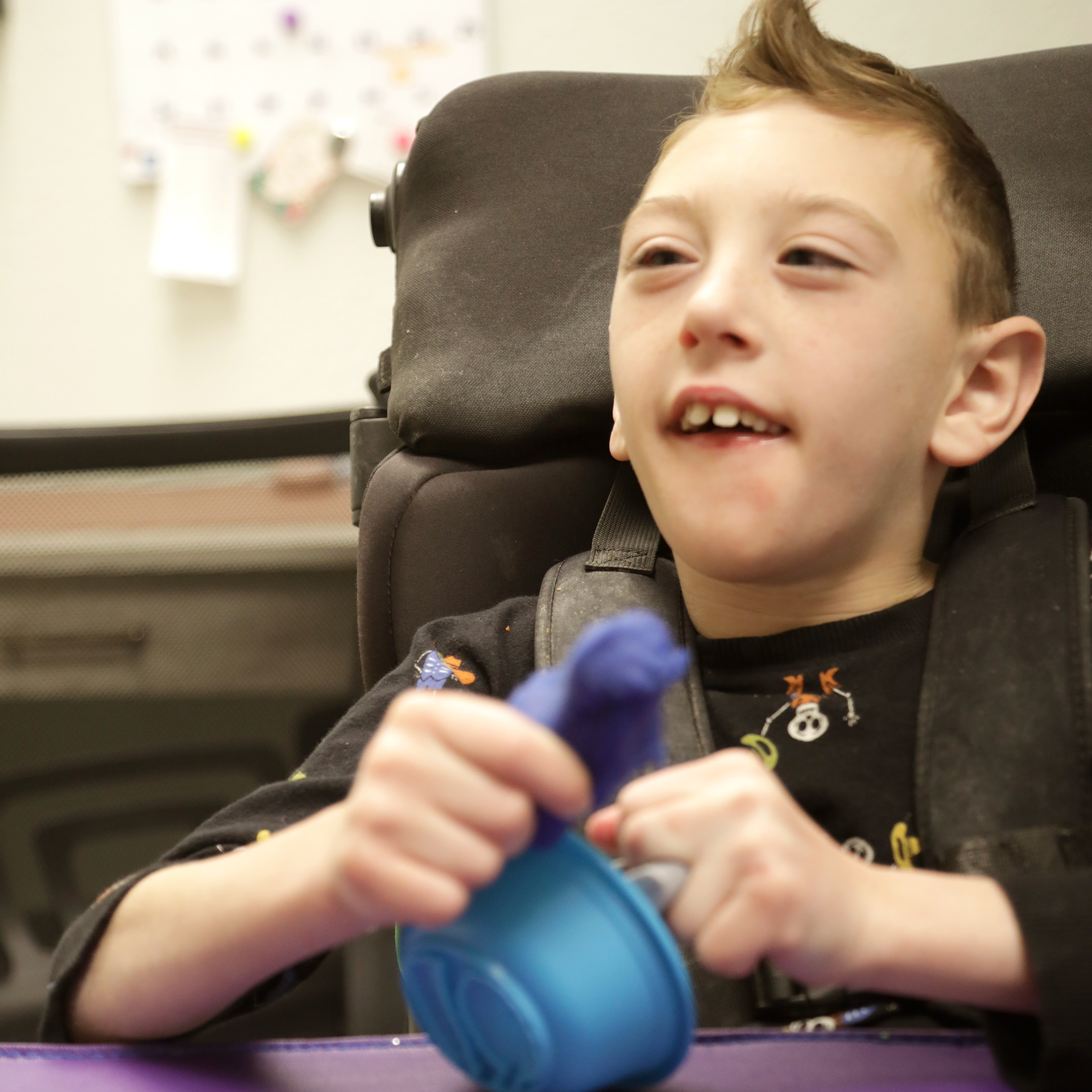
How Pediatric Therapy Helps Kids Thrive across Montana and Wyoming
A supportive guide for families exploring therapy options in Billings, Butte, Missoula or Sheridan.

How to Choose the Right Pediatric Therapy Clinic in Billings, Montana
A Parent‑Friendly Guide To Finding The Best Support For Your Child

Expressive Speech Delay 2-Year-Old
Understanding and Addressing Expressive Speech Delay in Toddlers

How Speech Recognition Works
Unlocking the Power of Speech Recognition in Therapy and Healthcare

Autism and Head Size
Understanding the Complex Relationship Between Autism and Head Size

Occupational Therapy in Autism
Enhancing Independence and Quality of Life Through Occupational Therapy in Autism

